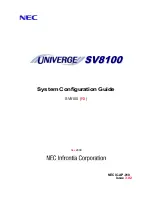
CY8CKIT-017 CAN/LIN Expansion Board Kit Guide, Doc. # 001-57814 Rev. *D
23
4.
Hardware
4.1
System Block Diagram
The CAN/LIN EBK hardware consists of the following functional blocks:
■
CAN transceiver circuit (TJA1050)
■
LIN transceiver circuit in master configuration (TJA1020)
■
LIN transceiver circuit in slave configuration (TJA1020)
■
Three indicator LEDs
■
EBK identification circuit (not populated)
■
40-pin (2x20) connector (Sullins Connector Solutions, S2111E-20-ND)
Figure 4-1. EBK Block Diagram
The primary functional blocks of this EBK are the three transceiver circuits: one CAN transceiver
circuit and two LIN transceiver circuits. Each of these transceiver circuits enables a digital CMOS
PSoC device to interface with a physical CAN or LIN bus, respectively. Without these transceiver
circuits, it is impossible for CMOS devices to communicate with other CAN or LIN nodes on a CAN
or LIN bus.
The EBK ID functional block consists of two circuits that are not populated, and can therefore be
ignored. These circuits exist to provide forward compatibility with automatic EBK identification
features that do not yet exist.
The LEDs functional block consists of three, active-low LEDs that can provide indications. These
LEDs are driven by PSoC pins.
The 40-pin (2x20) connector connects the configured PSoC I/O pins to the various circuits on the
expansion board.
20
x 2 Pin Co
n
n
ecto
r
EBK ID
CAN PHY
LIN PHY 1
LIN PHY 2
LEDs
3
3
3
3
3
CAN Bus
LIN Bus
LIN Bus
















































